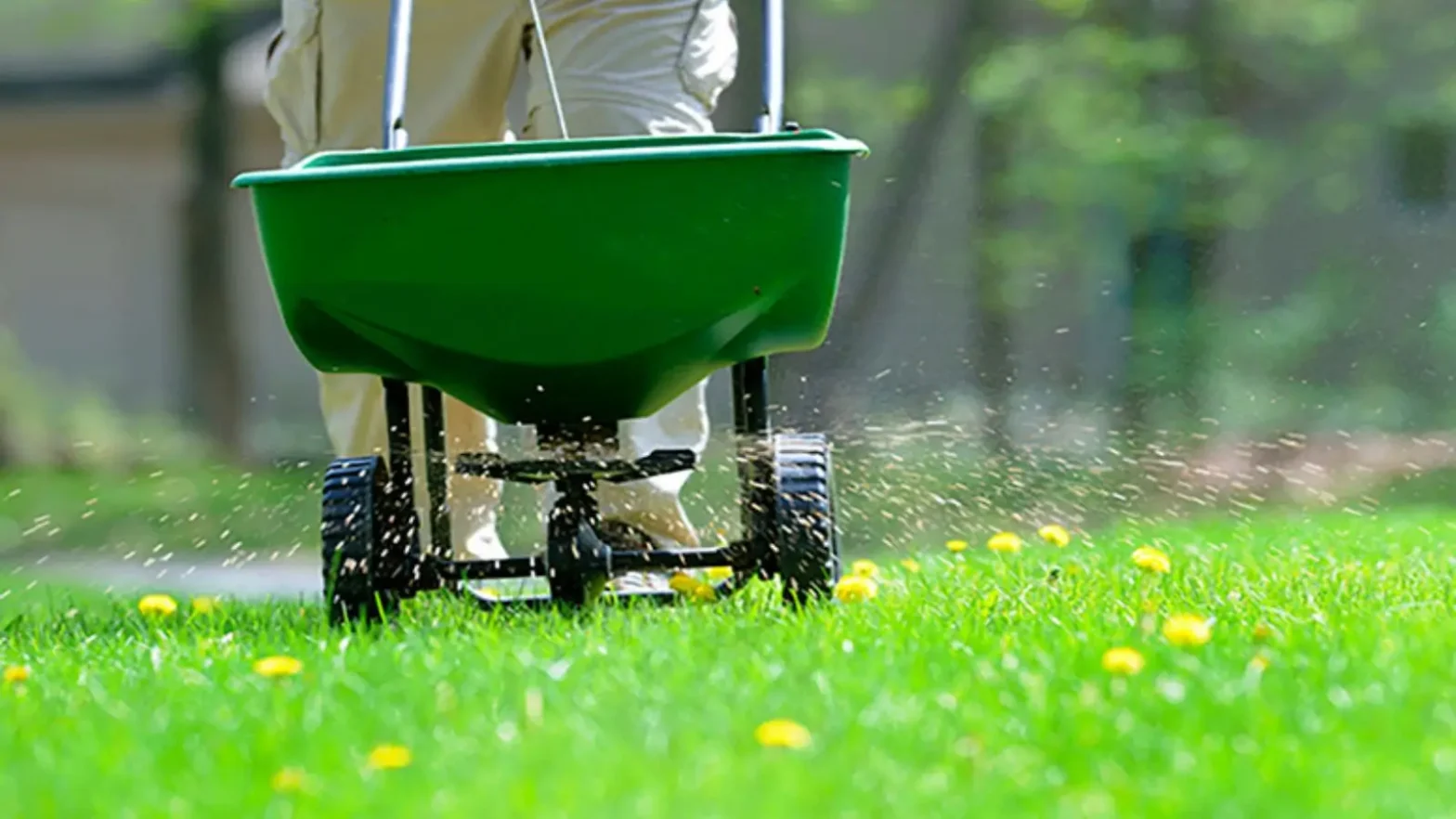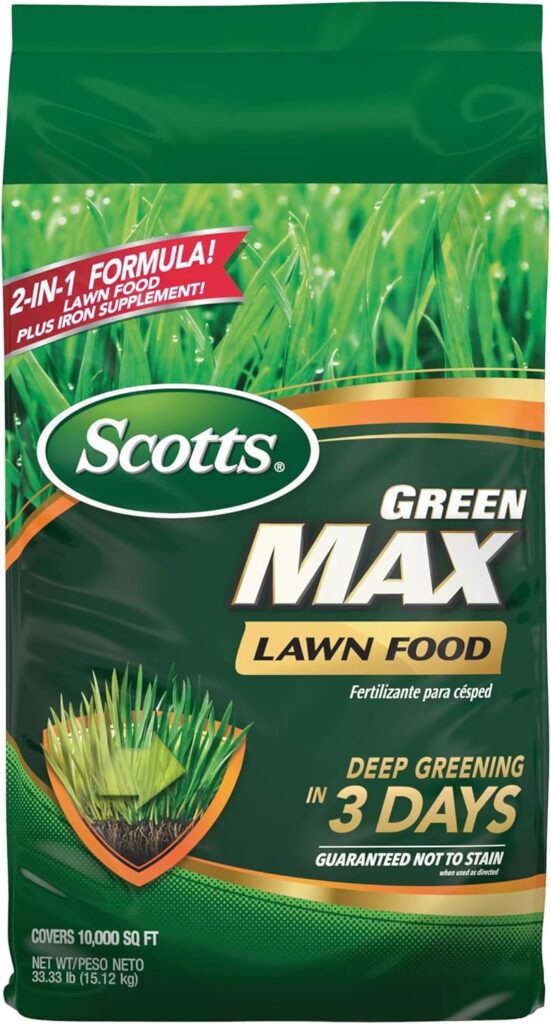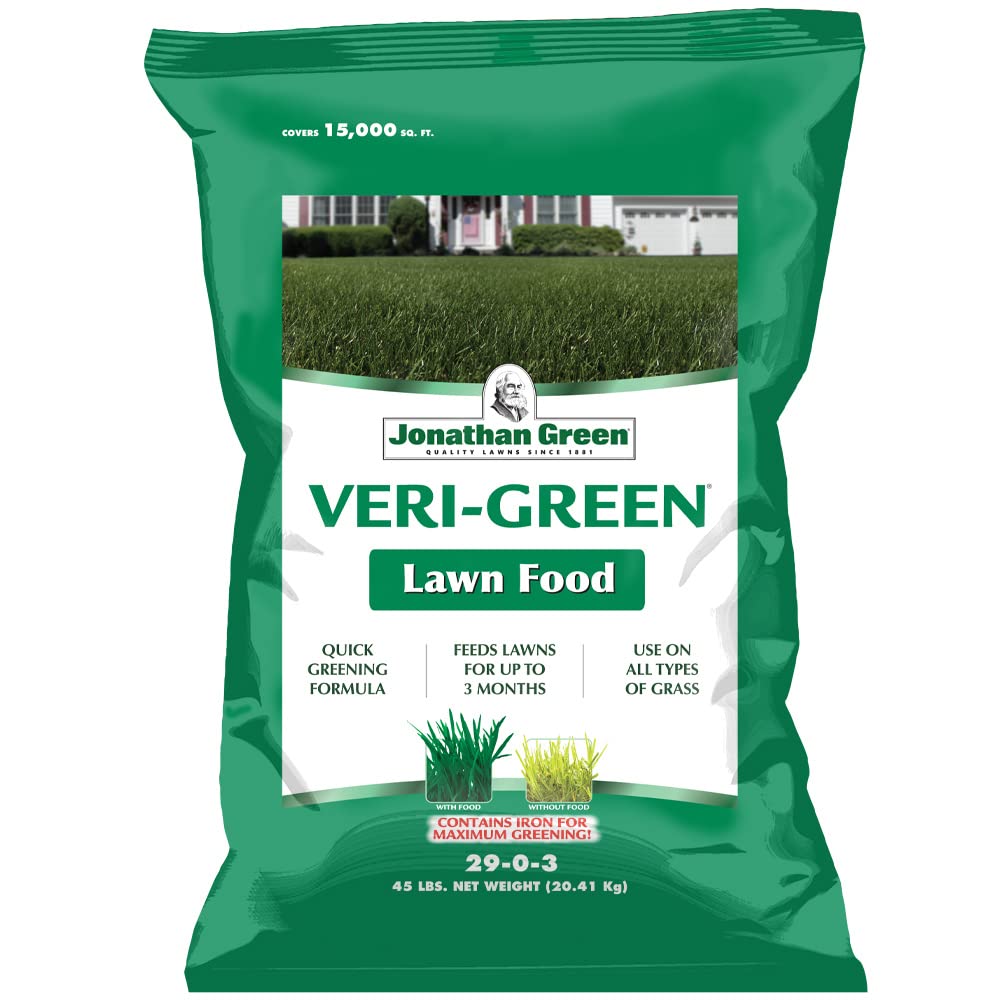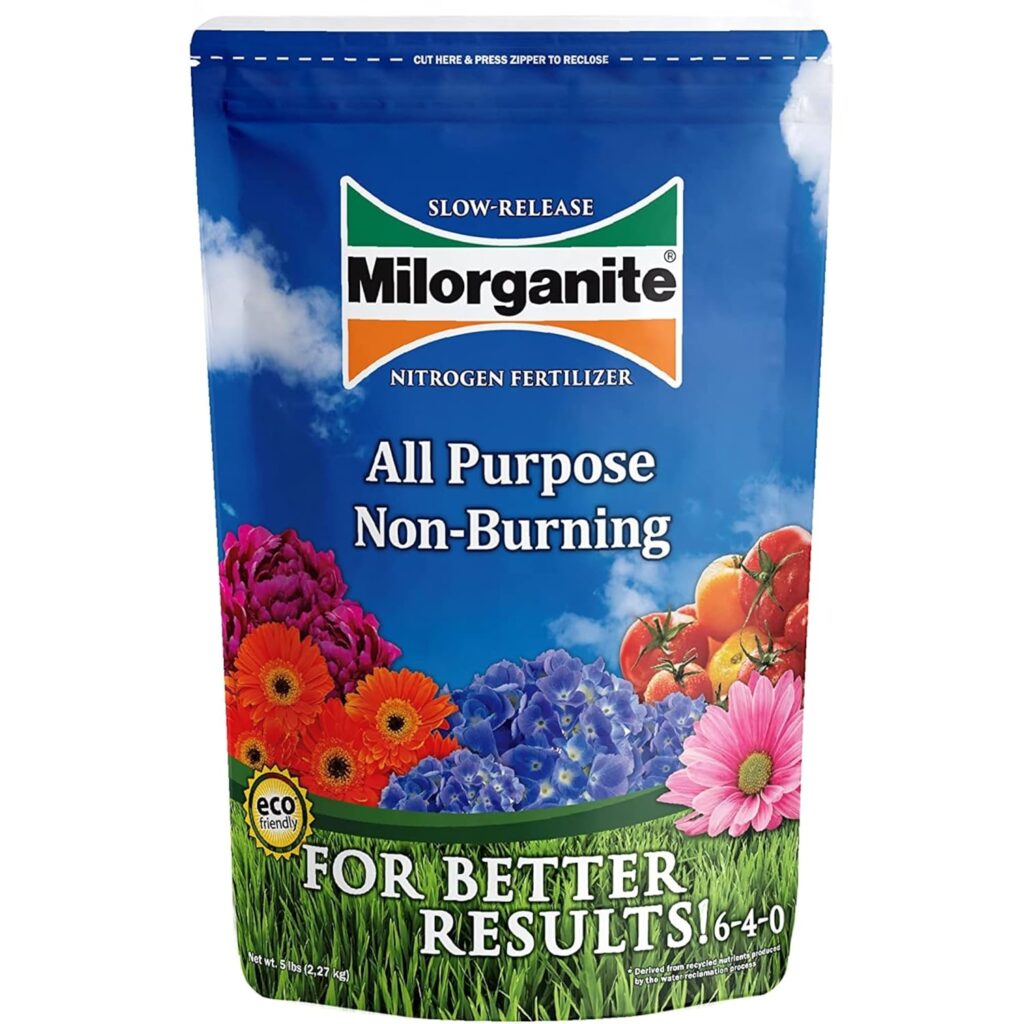Just the other day, I received an email from one of my followers that had this question:
“Wycliffe! I am an ardent follower of your blog, and I must say that I love the content you share. Thanks for that. However, I have a concern and I will ask straight on: how often should I fertilize my lawn?”
That question made me smile — not only because it’s sincere, but because it’s one of the most common lawn care dilemmas out there.
Truth is, every homeowner wants that lush, deep-green carpet of grass, but knowing how often to fertilize lawn can be confusing. Do it too frequently, and you risk burning your grass or wasting money. Do it too little, and your turf weakens, turns yellow, and lets weeds take over.
In this post, I’ll explore everything you need to know about how often should you fertilize your lawn, including the ideal timing, factors that influence your lawn fertilization schedule, and even the best lawn fertilizers that work wonders for most grass types.
By the end, you’ll have a practical plan to keep your yard looking rich, thick, and healthy all year round.
Why Fertilizing Your Lawn Matters
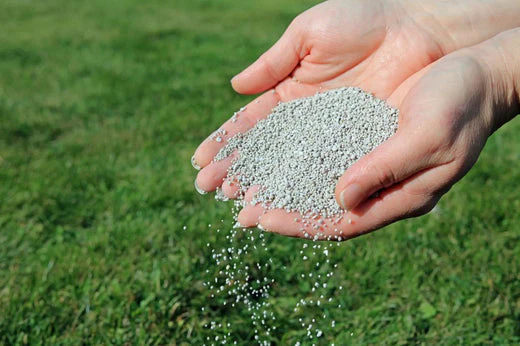
A green, vibrant lawn doesn’t just happen on its own. Grass constantly draws nutrients like nitrogen, phosphorus, and potassium from the soil — but over time, mowing, rainfall, and foot traffic deplete those nutrients.
When this happens, the soil can no longer support steady growth, and your once-lively turf starts to look tired and patchy.
That’s where lawn fertilizer comes in. It replenishes the soil with essential nutrients that encourage deep roots, strong blades, and a rich green color.
Regular feeding also helps your lawn recover from stress, resist disease, and outcompete weeds.
Without proper fertilization, grass becomes weak and thin, creating an environment that allows pests and diseases to thrive.
On the flip side, over-fertilizing can “burn” your grass or lead to runoff pollution. That’s why creating a balanced lawn fertilization schedule is crucial — it ensures your grass gets just the right amount of nutrients at the right time.
What Factors Affect How Often You Should Fertilize Your Lawn?
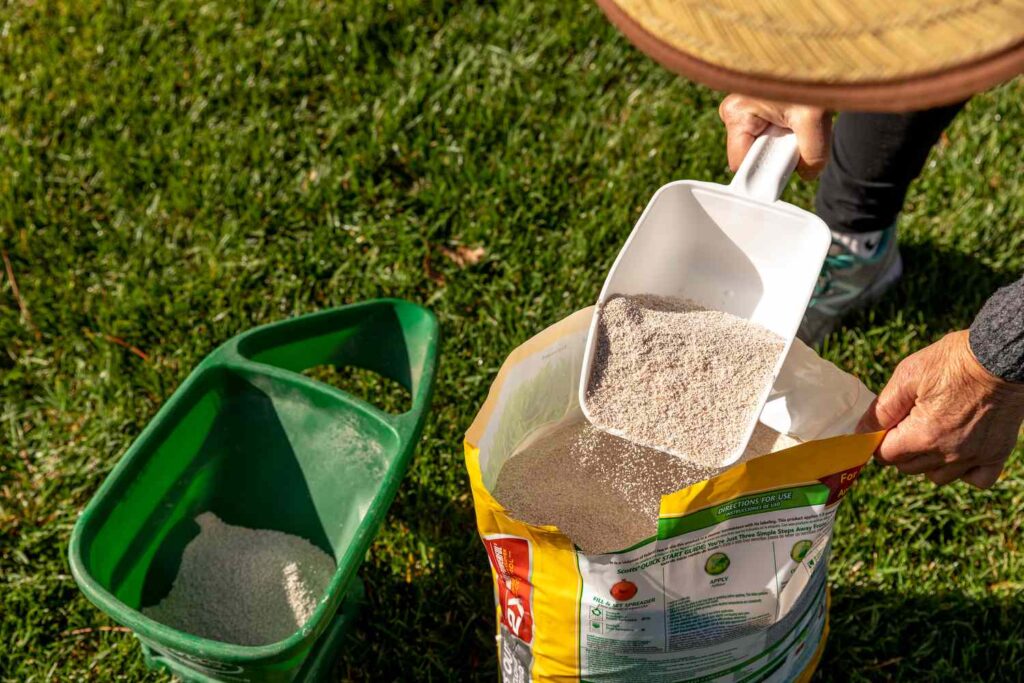
To determine how often you should fertilize your lawn, it’s important to understand that frequency depends on several factors—such as grass type, soil condition, climate, and fertilizer type.
Each of these plays a major role in how well your lawn absorbs nutrients and maintains its green appearance.
Grass Type (Cool-Season vs. Warm-Season Grasses)
Different grass types have unique growing patterns. Cool-season grasses—like Kentucky bluegrass, fescue, and ryegrass—grow most actively in spring and fall, meaning they benefit from fertilizer applications during those seasons.
On the other hand, warm-season grasses such as Bermuda, Zoysia, and St. Augustine thrive in the summer heat, so fertilizing them during late spring and summer ensures the best results.
Soil Condition and Nutrient Deficiency
If your soil lacks essential nutrients like nitrogen, phosphorus, or potassium, your grass will show signs of distress—such as yellowing, slow growth, or thinning.
Conducting a soil test every year helps you know exactly which nutrients your lawn needs. This prevents both under-fertilization and over-fertilization.
Climate and Rainfall Patterns
In regions with heavy rainfall, nutrients tend to leach away from the soil faster. As a result, you may need to fertilize more frequently.
Conversely, in dry or drought-prone areas, fewer applications might be needed. Always consider local weather conditions before applying fertilizer.
Type of Fertilizer Used
Fertilizers are available in two main types: slow-release and quick-release.
- Slow-release fertilizers feed the lawn gradually over several weeks or even months, reducing the need for frequent applications.
- Quick-release fertilizers provide an instant boost but require more frequent use to sustain lawn health.
Lawn Age and Maintenance Practices
A newly seeded or sodded lawn may need more frequent feedings to establish strong roots.
Meanwhile, an established lawn can thrive with fewer applications per year—especially if it’s regularly aerated, watered, and mowed at the correct height.
Compare: How to Fix Tire Ruts in Lawn
How Often Should You Fertilize Your Lawn?
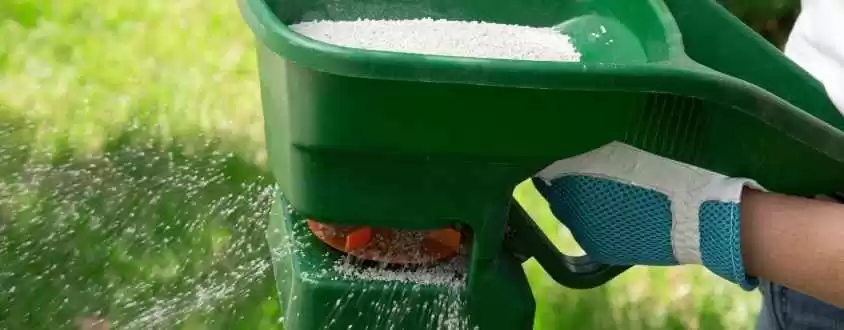
For most lawns, fertilizing four times a year (early spring, late spring, late summer, and fall) is ideal, but this can vary based on grass type and location.
Here’s a general guide to help you with your fertilizer application schedule:
Early Spring (March–April)
After winter dormancy, your lawn wakes up hungry. Apply a slow-release fertilizer rich in nitrogen to jumpstart growth and restore its lush green color.
Late Spring (May–June)
At this stage, your grass is actively growing. Use a balanced fertilizer to promote strong root and blade development while preventing weeds from taking over.
Late Summer (August)
High temperatures can stress your lawn. Apply a fertilizer with a slightly lower nitrogen content to strengthen the roots and prepare the lawn for cooler months.
Fall (September–October)
Fall feeding is perhaps the most crucial. A fall fertilizer helps your lawn recover from summer stress and build food reserves for winter survival and spring regrowth.
If you grow warm-season grasses, you may need to focus more on late spring and summer applications. For cool-season grasses, the best time to fertilize your lawn is early spring and fall.
Common Signs That Your Lawn Needs Fertilizer
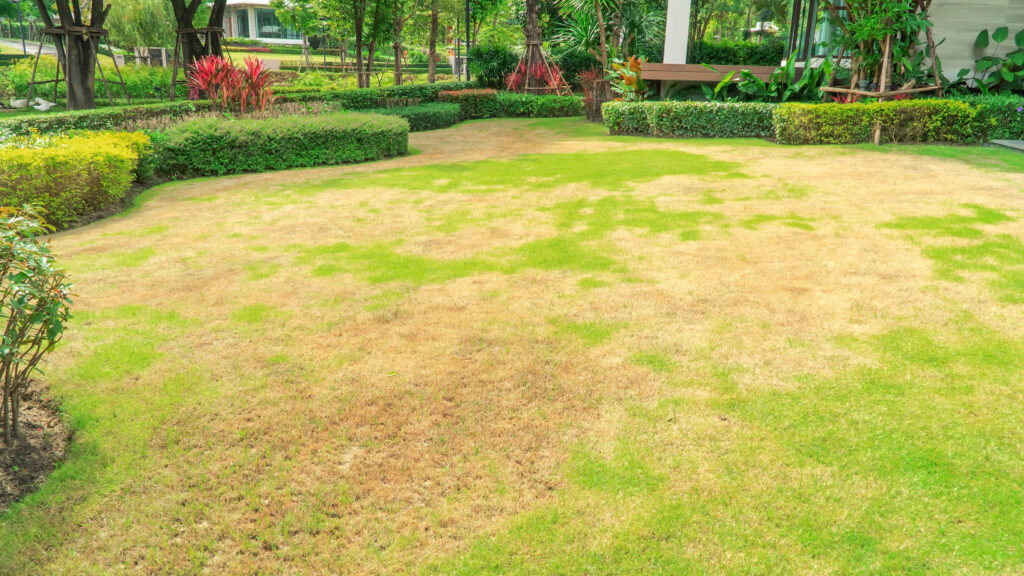
Even with good mowing and watering habits, lawns can lose their vigor over time. Recognizing early warning signs helps you know when to feed your grass before it becomes patchy or unhealthy.
Here are the most common symptoms that your lawn is hungry for nutrients.
Yellowing or Pale Grass Color
One of the first and most noticeable signs of nutrient deficiency is when your lush green turf starts turning yellow or light green. This usually indicates a lack of nitrogen, the key nutrient responsible for promoting green, leafy growth.
A balanced lawn fertilizer with nitrogen, such as the Maximum Green & Growth Fertilizer High Nitrogen 28-0-0 Liquid Lawn Food, can quickly restore that deep green hue.
Slow or Stunted Growth
If your lawn hasn’t grown much despite favorable weather conditions, that’s a red flag. When grass lacks phosphorus and other key nutrients, root development slows down.
Fertilizing boosts root strength and blade density, allowing your lawn to recover and thrive again.
Thinning or Bare Patches
Nutrient-deprived lawns often develop thin or bare patches because the roots aren’t getting enough food to sustain thick coverage.
Applying a slow-release fertilizer helps fill in those spots by encouraging even, consistent growth across your yard.
Weeds Taking Over
An underfed lawn becomes weak, making it easier for weeds like crabgrass, dandelions, and clover to invade. A healthy, well-fed lawn naturally crowds out weeds.
If you’re noticing weed dominance, that’s your cue that the lawn is lacking nutrients—and it’s time for a fertilizer application.
Poor Water Absorption or Runoff
When your grass roots are weak, the soil tends to compact and repel water rather than absorb it. This is often due to low organic matter and nutrient imbalance.
Fertilizing combined with aeration helps your lawn soak up water efficiently, reducing puddles and runoff.
Dull or Rough Lawn Texture
A rich, nourished lawn feels soft and bouncy underfoot. If your yard feels coarse or brittle, that’s another clear indicator of nutrient stress.
Consistent feeding with the right lawn care fertilizer will improve both texture and appearance.
3 Best Fertilizers for a Healthy Lawn
These are in no particular order, but each excels in different situations. Use the one that fits your grass type, climate, and budget.
1. Scotts Green Max Lawn Food, Lawn Fertilizer Plus Iron Supplement
Product Details:
- Available in different sizes: e.g., a 33.33 lb bag covers ~10,000 sq ft and a 16.67 lb bag covers ~5,000 sq ft.
- Has ~4.5 out of 5 stars in over 8,000+ global ratings on Amazon.
- Feeds lawns and gives deep greening in just about 3 days, thanks to added iron.
NPK / Composition & Special Features
- A fertilizer + iron supplement. 5% iron is included, which helps intensify the green color.
- Contains iron that is claimed not to stain concrete or surrounding surfaces when used correctly.
- Suitable for any grass type and usable in spring, summer, or fall.
What Makes it Great
- Fast visible greening: The iron does its job visibly fast, which is great for homeowners wanting a green lawn quickly.
- Broad usability: Works on many grass types (cool-season, warm-season) and across several seasons. That flexibility lets you use the same product through different periods.
- “Safety” for surfaces: Less risk of staining hardscapes like concrete, sidewalks, or patios (a big plus).
- Strong track record: Thousands of satisfied users; people report thicker, lush green lawns.
Things to Consider
- Because the iron boosts greening so fast, if you overuse it, you might get top growth you need to mow often.
- It’s more expensive per bag compared to basic fertilizers without iron or premium supplements.
- If the grass type is very sensitive or already deep green, the added iron may not yield much extra, so the cost-benefit could be lower.
Best Use Cases
- If your lawn is looking a bit pale and you want to boost color quickly.
- For homeowners who want a more “cosmetic” improvement (greener lawn), plus nutritional feeding.
- In climates or seasons where growth and greening are still possible (i.e., not dormant).
2. Jonathan Green Green-Up Lawn Food with Crabgrass Preventer (29-0-3)
Product Details:
- Feeds lawns and provides crabgrass prevention (both pre-emergent and post-emergent control) with the 29-0-3 NPK ratio.
- Size example: 50 lb bag covers up to 15,000 sq ft.
- ~4.5 out of 5 stars with hundreds of ratings on Amazon.
NPK / Composition & Special Features
- Very high in nitrogen (29) to support green blade growth; low/zero phosphorus; has potassium (3) for stress tolerance.
- The “Crabgrass Preventer” component helps control crabgrass before it germinates and after (up to certain growth stages).
- Doesn’t stain walkways or surfaces when used as directed.
What Makes it Great
- Dual function: Fertilizing + weed/crabgrass control saves time and effort. You get two benefits in one application.
- High nitrogen means strong greening and growth, especially useful in spring when the lawn wants to bounce back.
- Large coverage per bag gives better value for large yards.
Things to Consider
- Because it has weed control, you have to be careful if overseeding or renovating—you likely can’t use it in seeding periods (weed preventers often interfere with seed germination).
- For warm-season grasses in cooler periods, high nitrogen when the grass is trying to go dormant can lead to weak, succulent growth prone to disease.
- Likely more expensive than simpler pure fertilizers without weed prevention.
Best Use Cases
- Spring applications to both green the lawn and reduce weed pressure, especially in regions where crabgrass is a major issue.
- For homeowners who want to reduce weed load while still feeding.
- Large lawns where you want good coverage with a single application.
3. Milorganite All-Purpose Eco-Friendly Slow-Release Fertilizer (6-4-0)
Product Details:
- Example size: 5-pound bag, covers ~2,500 sq ft (or less, depending on the rate used).
- Very high rating: ~4.6 out of 5 stars from thousands of reviews (~4,700+ for one size) on Amazon.
NPK / Composition & Special Features
- N-P-K 6-4-0: modest nitrogen, some phosphorus, no potassium (in some versions).
- Organic / biosolid-based slow-release fertilizer. The nutrients are released over ~8-10 weeks.
- Very low in salts (which reduces the risk of burning grass). Also, it contains iron in forms that don’t stain.
What Makes it Great
- Gentle on the lawn: Less risk of burning or damaging grass even in heat or under heavy sun. Great for lawns with sensitive grass or where fertilizer burn is a worry.
- Long-lasting feeding: Because of slow-release, fewer applications are needed (fewer peaks and valleys), which aligns well with a balanced lawn fertilization schedule.
- Eco-friendly: Less harsh chemicals, more “natural” feel. Good if you want organic components or safer around pets/kids.
Things to Consider
- Growth response is slower: you won’t get immediate greening or a big “pop” the way synthetic, high nitrogen fertilizers give.
- Because potassium is low or zero, over time, your lawn may need supplemental potassium depending on soil test results.
- It may smell a bit when first applied (some reports). The organic / biosolid origin causes a mild odor that fades.
Best Use Cases
- If you prefer organic or eco-friendly fertilizer types, or if you want minimal risk of burning.
- In maintenance phases, especially for established lawns that need regular feeding but not aggressive “boosts.”
- For use during warmer weather when microbial activity is high (since the release depends on microbes breaking down the material).
Recommendation & How to Choose Between Them
Here are some guidelines on choosing among these three (or combining, depending on needs):
| Your Situation | Best Choice | Why |
| Want fast, dramatic greening, have moderate weed pressure, and aren’t seeding | Scotts Green Max | Fast iron boost, works on many grasses, great visual impact. |
| Want both feed + weed/crabgrass prevention in one, especially in spring | Jonathan Green Green-Up with Crabgrass Preventer | Combines functions, excellent value if weeds are an issue. |
| Prefer gentler feeding, organic inputs, lower risk of over-application or burning | Milorganite | Slow‐release, organic, safer around sensitive lawns/pets/children. |
Also consider your soil test: If the soil is low in potassium, none of these three really gives high potassium, so you’ll need a supplement.
If phosphorus is restricted in your area, be sure the product complies.
Best Fertilization Schedule for Different Grass Types
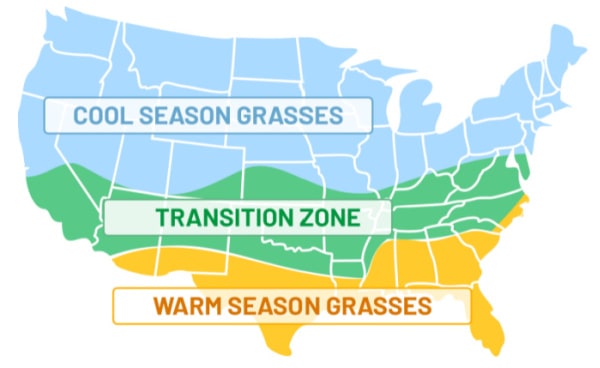
Now that you know how often you should fertilize your lawn and which products give the best results, it’s time to tailor your feeding schedule to your specific grass type.
Different grasses have unique growing seasons and nutrient demands, so timing your fertilizer applications correctly ensures consistent growth, color, and resilience throughout the year.
Fertilization Schedule for Cool-Season Grasses
Cool-season grasses—like Kentucky bluegrass, perennial ryegrass, and fescue—thrive in cooler weather, typically between 60°F and 75°F. Their peak growth periods occur in spring and fall, meaning these are the best times to fertilize.
Here’s a recommended schedule:
✅ Early Spring (March–April)
Feed your lawn with a balanced or nitrogen-rich fertilizer to help it recover from winter dormancy. A slow-release formula, such as Milorganite, works perfectly at this time since it provides steady nutrients as soil temperatures rise.
✅ Late Spring (May–June)
Use a fertilizer with a slightly lower nitrogen content to maintain steady growth without encouraging excessive top growth. You can also choose a product with weed control, like Jonathan Green Green-Up with Crabgrass Preventer, to reduce spring weed invasion.
✅ Early Fall (September)
This is the most crucial feeding time for cool-season lawns. Apply a high-nitrogen fertilizer such as Scotts Green Max Lawn Food to boost blade color and prepare the roots for winter stress.
✅ Late Fall (October–November)
Apply a winterizer fertilizer—one high in potassium—to strengthen roots and store energy for early spring greening. Avoid fertilizing once the ground freezes, as nutrients won’t be absorbed.
Pro Tip: Avoid fertilizing cool-season grasses during the peak summer heat. It can stress your lawn and may lead to burn or fungal diseases. Instead, water deeply and keep your mower blades sharp to maintain lawn health.
Fertilization Schedule for Warm-Season Grasses
Warm-season grasses like Bermudagrass, Zoysia, St. Augustine, and Centipede grass grow best when temperatures range from 80°F to 95°F.
Their active growth season is in late spring and summer, making that the perfect time for fertilization.
✅ Late Spring (April–May)
Once your grass turns green and begins growing actively, apply your first round of fertilizer. Use a nitrogen-rich product like Scotts Green Max Lawn Food for quick greening.
✅ Mid-Summer (June–July)
Apply a slow-release fertilizer to maintain color and support ongoing growth. Milorganite is excellent here because it won’t burn the grass in high heat and provides nutrients gradually over time.
✅ Late Summer (August)
Feed again with a balanced fertilizer to strengthen the lawn before the cooler months arrive. Avoid heavy nitrogen applications after August if you’re in areas with early fall cooling.
✅ Early Fall (September)
If you live in southern regions with mild falls, you can make one final light feeding to help your lawn recover from summer stress and encourage root development.
Pro Tip: Avoid fertilizing too early in spring before your warm-season lawn fully greens up. Doing so encourages weeds more than grass growth.
Special Cases: Transitional Zones and Mixed Lawns
If you live in regions where temperatures fluctuate—like the Mid-Atlantic or lower Midwest—you may have a mix of grass types or transitional climate challenges.
Here’s how to manage such lawns:
- Apply fertilizer in moderation throughout the year—roughly every 8–10 weeks, but at half-strength rates.
- Combine slow-release fertilizers for consistent feeding with a single quick-release application in early spring or fall for color enhancement.
- Avoid fertilizing both types at their off-peak times; instead, synchronize with your dominant grass type.
Environmental and Regional Considerations
Keep in mind that local conditions—like rainfall, soil composition, and regional temperature ranges—will slightly alter your fertilization needs.
For example:
- In humid or rainy areas, nutrients can leach quickly, requiring slightly more frequent feedings.
- In dry or drought-prone areas, reduce fertilization and focus more on watering deeply once or twice a week.
- In northern states, fall fertilization is key; in southern states, summer applications are more critical.
Common Fertilizing Mistakes to Avoid
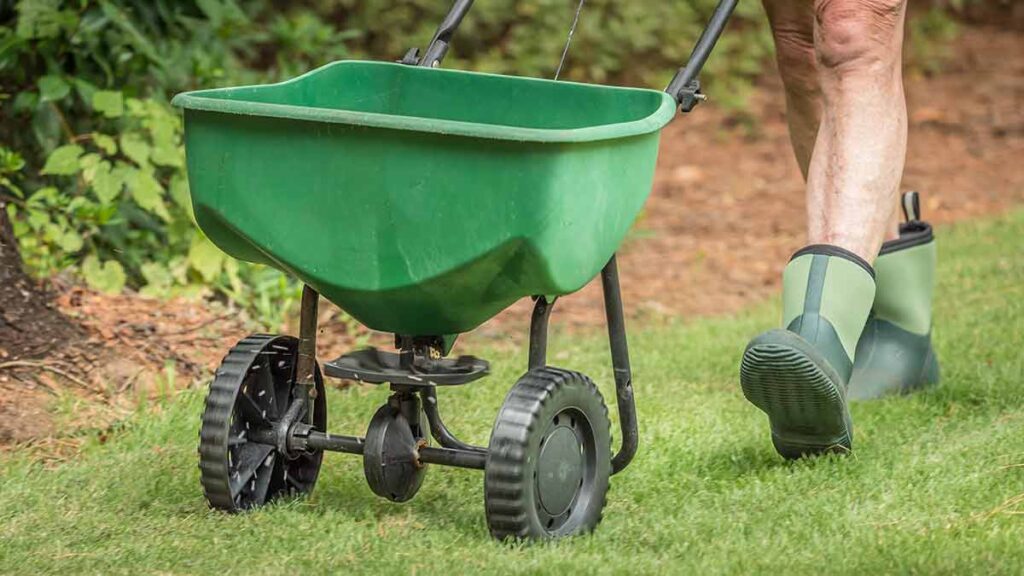
Even with the best intentions, many homeowners unintentionally harm their lawns by making simple fertilizing errors.
Avoiding these mistakes can save you from patchy grass, nutrient waste, and even long-term soil damage.
Here are the most common fertilizing mistakes to watch out for — and how to prevent them.
Over-Fertilizing the Lawn
Applying too much fertilizer is one of the biggest mistakes. While you might think more nutrients mean greener grass, it can actually burn the lawn, causing yellow or brown patches.
Excess fertilizer also promotes fast top growth, which weakens the root system and makes your grass more vulnerable to disease and drought.
How to Avoid It: Always follow the manufacturer’s recommended application rate and use a broadcast or drop spreader for even coverage. For beginners, start with slow-release fertilizer, which feeds gradually and minimizes the risk of burning.
Fertilizing at the Wrong Time
Timing is everything in lawn care. Applying fertilizer when your grass is dormant or under heat stress won’t deliver results — in fact, it can harm your lawn.
Fertilizing cool-season grasses during hot summer months, or warm-season grasses during winter dormancy, wastes product and can lead to root burn.
How to Avoid It: Use a seasonal fertilization schedule based on your grass type. Fertilize only during the active growing season when roots can absorb and utilize the nutrients efficiently.
Ignoring Soil Testing
Fertilizing without testing your soil is like taking vitamins without knowing what your body actually needs.
Some soils already have sufficient phosphorus or potassium, so adding more can lead to nutrient imbalance or runoff.
How to Avoid It: Conduct a soil test at least once every year or two. Most state cooperative extensions offer affordable soil testing services. The report will tell you your soil’s pH, nutrient levels, and what amendments are needed.
Using the Wrong Fertilizer Type
Not all fertilizers are created equal. Choosing the wrong formula for your lawn can do more harm than good.
For example, applying a high-nitrogen fertilizer on a lawn that already has lush top growth but weak roots may worsen the imbalance.
How to Avoid It: Match your fertilizer type with your lawn’s needs. For deep color and quick results, go for Scotts Green Max Lawn Food. For weed prevention, use Jonathan Green Green-Up Lawn Food with Crabgrass Preventer.
For safe, slow feeding, opt for Milorganite.
Skipping Watering Before or After Application
Fertilizer granules need water to dissolve and penetrate the soil. If applied on dry grass without watering afterward, the fertilizer can sit on the surface and burn the leaves.
How to Avoid It: Lightly water your lawn a day before fertilizing to moisten the soil, and water again afterward to help nutrients soak in. Avoid heavy watering that causes runoff.
Fertilizing Unevenly
Uneven fertilizer application can lead to streaks of dark green and pale yellow areas on your lawn. This usually happens when fertilizer is applied by hand or when a spreader isn’t calibrated properly.
How to Avoid It: Use a spreader for even distribution and make two passes at perpendicular angles (north–south, then east–west). This ensures complete and uniform coverage.
Ignoring Weather Conditions
Applying fertilizer just before heavy rain or during drought is a recipe for waste. Rain can wash away nutrients before your grass absorbs them, while heat and dryness reduce fertilizer uptake.
How to Avoid It: Check the weather forecast before fertilizing. Aim for mild, calm days with no rain expected for 24–48 hours.
Forgetting Regular Maintenance
Fertilizer alone won’t keep your lawn healthy. Skipping mowing, aeration, and watering will make even the best fertilizer ineffective. All these practices work together to maintain healthy soil and roots.
How to Avoid It: Combine fertilization with a consistent lawn care routine — mow regularly, aerate annually, and water deeply once or twice a week.
Pro Tip: Always clean up fertilizer spills on driveways, sidewalks, or patios. Excess fertilizer that washes into storm drains contributes to nutrient pollution in waterways.
Frequently Asked Questions (FAQs)
Q: How often should you apply fertilizer to your lawn?
A: Most lawns benefit from fertilization two to four times per year, depending on the grass type, climate, and soil quality. Cool-season grasses like fescue and ryegrass perform best when fertilized in spring and fall, while warm-season grasses such as Bermuda or Zoysia prefer spring through summer feedings. Always space applications about 6–8 weeks apart and adjust based on your soil test results.
Q: Which is the best fertilizer for lawn?
A: The best fertilizer depends on your lawn’s condition and goals. However, highly rated options include Scotts Turf Builder Lawn Food (29-0-5) for consistent greening and thickening, Milorganite 0636 Organic Nitrogen Fertilizer (5-2-0) for eco-friendly, long-term soil health, and Simple Lawn Solutions Advanced 16-4-8 Balanced NPK Lawn Food for quick, visible results. Each of these fertilizers provides balanced nutrients and suits all major grass types in U.S. lawns.
Q: Is it better to fertilize before or after rain?
A: It’s best to fertilize your lawn just before light rainfall or after watering it lightly. Moist soil helps the fertilizer absorb more effectively, reducing waste and minimizing runoff. Avoid applying fertilizer before heavy rain, as it can wash away nutrients and pollute waterways. If you’re unsure about the upcoming weather, lightly water your lawn after fertilizing to help the nutrients soak into the soil.
Q: What month should I stop fertilizing my lawn?
A: In most U.S. regions, you should stop fertilizing by late fall (around October or November). Applying fertilizer too late in the season can encourage new growth just before winter, which weakens the grass and makes it prone to frost damage. However, cool-season lawns benefit from a final fall feeding to strengthen roots for winter dormancy. Always check your local climate and grass growth cycle to determine the right cutoff month.
Conclusion
Caring for your lawn doesn’t have to be complicated — it simply requires timing, consistency, and the right fertilizer.
As we’ve seen, understanding how often you should fertilize your lawn depends largely on your grass type, soil condition, and regional climate.
Whether you’re working with a cool-season or warm-season grass, feeding your lawn two to four times a year keeps it lush, resilient, and deep green throughout the growing season.
When it comes to choosing the right fertilizer, products like Scotts Turf Builder Lawn Food, Milorganite Organic Nitrogen Fertilizer, and Simple Lawn Solutions Advanced 16-4-8 stand out for their proven performance, high customer satisfaction, and ability to deliver balanced nutrition.
Each serves a unique purpose — Scotts for strong, consistent growth; Milorganite for organic, soil-enriching care; and Simple Lawn Solutions for quick, visible results.
Remember, the secret to a healthy lawn isn’t just in fertilizing — it’s in following a proper schedule, watering wisely, and observing your lawn’s response over time.
A thriving lawn is the result of ongoing care, not a one-time application.
So, test your soil, apply your fertilizer strategically, and soon enough, your yard will reward you with a vibrant carpet of green that transforms your outdoor space into a true retreat.

